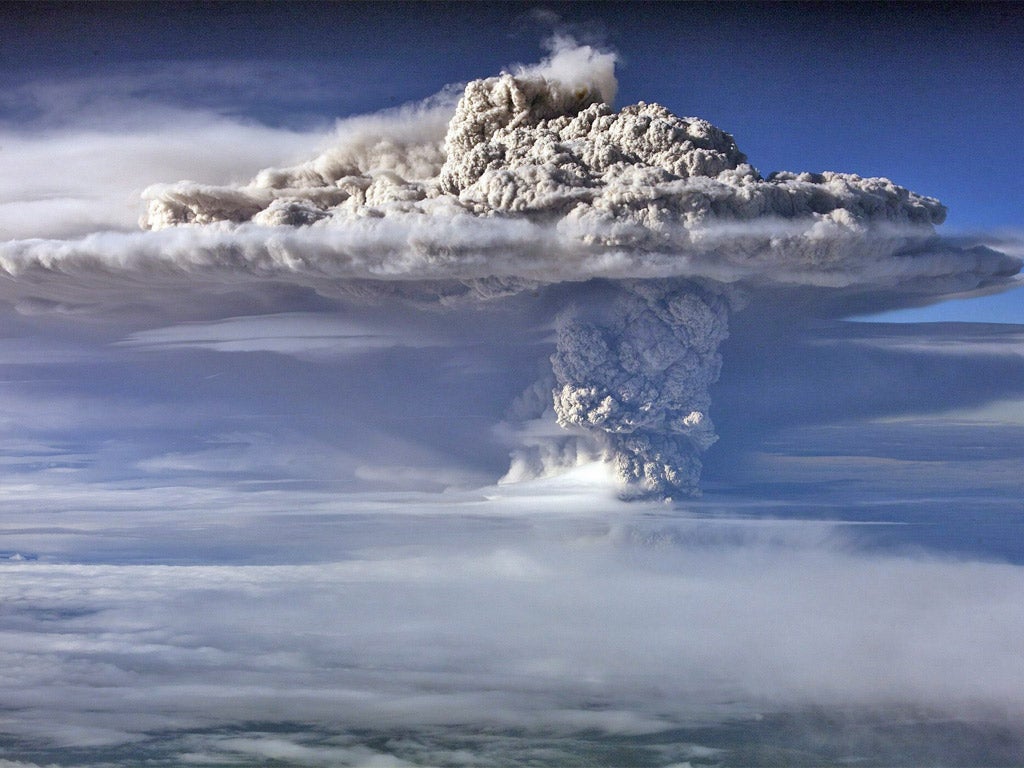Grounded no more: the ingenious bit of kit easyJet claims will help beat the ash cloud
The 2010 Iceland volcano cost airlines £1bn, so any way of avoiding a repeat will be welcome news

Your support helps us to tell the story
This election is still a dead heat, according to most polls. In a fight with such wafer-thin margins, we need reporters on the ground talking to the people Trump and Harris are courting. Your support allows us to keep sending journalists to the story.
The Independent is trusted by 27 million Americans from across the entire political spectrum every month. Unlike many other quality news outlets, we choose not to lock you out of our reporting and analysis with paywalls. But quality journalism must still be paid for.
Help us keep bring these critical stories to light. Your support makes all the difference.
For the past fortnight, Captain Uwe Post has been flying in circles in the congenial surroundings of north-eastern Sicily. The German pilot is working for an Anglo-Norwegian project that aims to allow passenger aircraft to fly safely during and after volcanic eruptions.
Unlike normal pilots, who go out of their way to avoid active volcanoes, Captain Post appears never happier than when flying around the simmering caldera of Mount Etna, or venturing across to a fuming Stromboli, in command of a specially equipped light aircraft collecting data on ash dispersal.
Last year the eruption of Eyjafjallajökull shut down flying over Europe for days. The aviation authorities closed airspace because of fears that aircraft engines could ingest dangerous quantities of ash. The closure wrecked the travel plans of 7 million passengers and collectively cost airlines over £1bn.
This year another Icelandic volcano, Grimsvotn, caused the cancellation of hundreds more flights. There are fears that Katla, buried beneath half a mile of ice, is on the brink of producing Iceland’s most powerful volcanic eruption in nearly a century. The head of engineering for easyJet, Ian Davies, said “We think Katla is going to be a bigger problem than the other two”.
The closure of airspace in April 2010 last year cost easyJet alone £57m. The airline had to book and pay for 100,000 hotel rooms for stranded passengers, and – when the skies re-opened – charter in extra capacity to repatriate travellers.
Jet engines are highly susceptible to volcanic ash. If ash is ingested, the high temperatures inside the engines can melt the silica, which then coats the fan blades causing damage or outright failure. But research since the Eyjafjallajökull shutdown last year suggests that less than 2 per cent of the airspace declared closed by the eruption had potentially dangerous concentrations of ash.
To try to minimise future disruption, easyJet has joined forces with the Norwegian Institute for Air Research to devise a system that will allow pilots to identify, and evade, clouds of volcanic ash.
Dr Fred Prata, a senior scientist at the institute, designed an aircraft-mounted infra-red device that can interpret the size and concentration of particles to give flight crew advance warning of potentially dangerous ash clouds from a distance of 60 miles. It is known as the Airborne Volcanic Object Imaging Detector – or AVOID for short.
“The system contains two cameras that sample very rapidly and measure infra-red radiation,” said Dr Prata. “We’re able to distinguish silicate particles from everything else in the atmosphere. It’s the silicates that melt in the engines that cause the problem, so we’re actually detecting the hazard.”
For the Airbus A320 family of aircraft as used by easyJet and British Airways, the detector can be mounted on the winglet, while on Boeing 747 Jumbo jets it could be attached to the “fifth engine” mounting.
The system is underpinned by “inversion modelling”, whereby scientists work backwards from satellite-observed patterns of volcanic ash to determine the size of the eruption. Dr Prata claims this approach provides a much more accurate prediction of the spread of ash clouds than the models used for previous eruptions. And Mr Davies has such confidence in the technology that he has vowed to avoid any more cancellations: “Next time I want it to be zero”.
But easyJet faces a race against the restless earth if it is to keep the skies open and fly through the next eruption. The instrument has yet to be tested aboard an Airbus jet, flying without passengers. Before AVOID can be used on any commercial flight, it must be certified by the European Air Safety Agency. If approval is granted, easyJet hopes to deploy the system on some aircraft from next summer.
The airline, which is sharing its findings with other carriers. is understood to have spent up to £1m on developing the system. That figure will increase sharply if it is installed across the easyJet fleet of 204 aircraft. But Ian Davies insisted “ We will not be putting ticket prices up. We are seeking to limit our losses”.
Download Simon Calder's audio interview with Dr Fred Prata and Ian Davies here, or listen using the player below.
Join our commenting forum
Join thought-provoking conversations, follow other Independent readers and see their replies
Comments